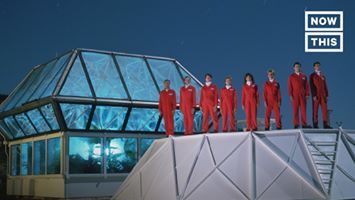Perhaps one day we will transcend our biological limitations and be more like mutants or aliens?
Entra para leer el articulo completo.
Perhaps one day we will transcend our biological limitations and be more like mutants or aliens?
Entra para leer el articulo completo.
In an effort to make highly sensitive sensors to measure sugar and other vital signs of human health, Iowa State University’s Sonal Padalkar figured out how to deposit nanomaterials on cloth and paper.
Feedback from a peer-reviewed paper published by ACS Sustainable Chemistry and Engineering describing her new fabrication technology mentioned the metal-oxide nanomaterials the assistant professor of mechanical engineering was working with—including zinc oxide, cerium oxide and copper oxide, all at scales down to billionths of a meter—also have antimicrobial properties.
“I might as well see if I can do something else with this technology,” Padalkar said. “And that’s how I started studying antimicrobial uses.”
In satellite photos of the Earth, clouds of bright green bloom across the surface of lakes and oceans as algae populations explode in nutrient-rich water. From the air, the algae appear to be the primary players in the ecological drama unfolding below.
But those single-celled organisms we credit for influencing the aquatic environment at the base of the food chain may be under the influence of something else: viruses whose genes can reconfigure their hosts’ metabolism.
In a new study published in Nature Communications, a research team from Virginia Tech reported that they had found a substantial collection of genes for metabolic cycles—a defining characteristic of cellular life—in a wide range of “giant viruses.”
This could lead to biological teleportation. :3.
Photosynthesis is a highly optimized process from which valuable lessons can be learned about the operating principles in nature. Its primary steps involve energy transport operating near theoretical quantum limits in efficiency. Recently, extensive research was motivated by the hypothesis that nature used quantum coherences to direct energy transfer. This body of work, a cornerstone for the field of quantum biology, rests on the interpretation of small-amplitude oscillations in two-dimensional electronic spectra of photosynthetic complexes. This Review discusses recent work reexamining these claims and demonstrates that interexciton coherences are too short lived to have any functional significance in photosynthetic energy transfer. Instead, the observed long-lived coherences originate from impulsively excited vibrations, generally observed in femtosecond spectroscopy. These efforts, collectively, lead to a more detailed understanding of the quantum aspects of dissipation. Nature, rather than trying to avoid dissipation, exploits it via engineering of exciton-bath interaction to create efficient energy flow.
Over the past decade, the field of quantum biology has seen an enormous increase in activity, with detailed studies of phenomena ranging from the primary processes in vision and photosynthesis to avian navigation (1, 2). In principle, the study of quantum effects in complex biological systems has a history stretching back to the early years of quantum mechanics (3); however, only recently has it truly taken center stage as a scientifically testable concept. While the overall discussion has wide-ranging ramifications, for the purposes of this Review, we will focus on the subfield where the debate is most amenable to direct experimental tests of purported quantum effects—photosynthetic light harvesting.
:0000
This article follows on from several others on this theme that I wrote some time ago, for details of which see footnote.
The idea of the earth as a superorganism re-emerged in modern times with the work of the independent scientist James Lovelock and his Gaia hypothesis. This was developed further by the spiritually oriented writer Peter Russell in The Awakening Earth.
Continue reading “The Earth as a Superorganism — Further Thoughts” »
Sediment layers in rock or tree rings can hold clues to what the environment was like at different times in the past – and the same idea may even apply to your own teeth. Scientists at New York University have found that the material that makes up tooth roots preserves a lifelong record of stresses on the body, such as childbirth, illness, and even prison time.
While most of a tooth doesn’t grow once it’s popped up in your jaw, the tissue around the roots do. Known as cementum, this stuff regularly adds new layers after the tooth surfaces. And for this study, the researchers investigated the hypothesis that major physiological events would leave their mark in these layers.
To test the idea, the team examined 47 teeth from 15 different people, between the ages of 25 and 69. The life histories of all of these people were known, including things like whether they’d given birth, had major illnesses or even moved from rural to urban areas. Crucially, they also knew what ages these events had occurred.
A team of scientists, led by the University of Bristol, has developed a new photosynthetic protein system enabling an enhanced and more sustainable approach to solar-powered technological devices.
The initiative is part of a broader effort in the field of synthetic biology to use proteins in place of man-made materials which are often scarce, expensive and can be harmful to the environment when the device becomes obsolete.
The aim of the study, published today in Nature Communications, was the development of “chimera” photosynthetic complexes that display poly-chromatic solar energy harvesting.

This man lived inside a self-sustaining glass biosphere for 2 whole years to test drive what life would be like for humans on Mars via NowThis.